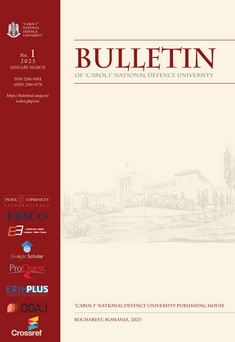The Survival of NATO in the Post-Cold War Era: A Comparative Analysis of Neorealist and Constructivist Theories
The Survival of NATO in the Post-Cold War Era: A Comparative Analysis of Neorealist and Constructivist Theories
Author(s): Petar MURGINSKISubject(s): Political history, International relations/trade, Political behavior, Transformation Period (1990 - 2010), Present Times (2010 - today)
Published by: Carol I National Defence University Publishing House
Keywords: NATO; Cold War; neorealism; constructivism; international relations; Soviet Union; United States;
Summary/Abstract: This scholarly article examines the continued existence of NATO after the end of the Cold War. Despite the disappearance of its primary adversary, the Soviet Union, NATO has continued to exist. The conventional neorealist explanation for the alliance’s longevity, which states that NATO was established as a counterbalance to the Soviet Union and thus should have been dissolved upon its collapse, is challenged by the constructivist perspective. Constructivism argues that NATO persists as a result of the desire of liberal democracies to cooperate for the sake of peace and the influence of member states’ collective identities. However, this constructivist explanation is criticized for being predicated on a specific understanding of NATO and for neglecting the crucial role of the United States in sustaining the alliance. This study contends that offensive neorealism, which takes into account the role of the United States in a value-neutral way, offers the most comprehensive explanation for NATO’s persistence after 1991.
Journal: Bulletin of "Carol I" National Defence University (EN)
- Issue Year: 12/2023
- Issue No: 01
- Page Range: 53-61
- Page Count: 9
- Language: English

